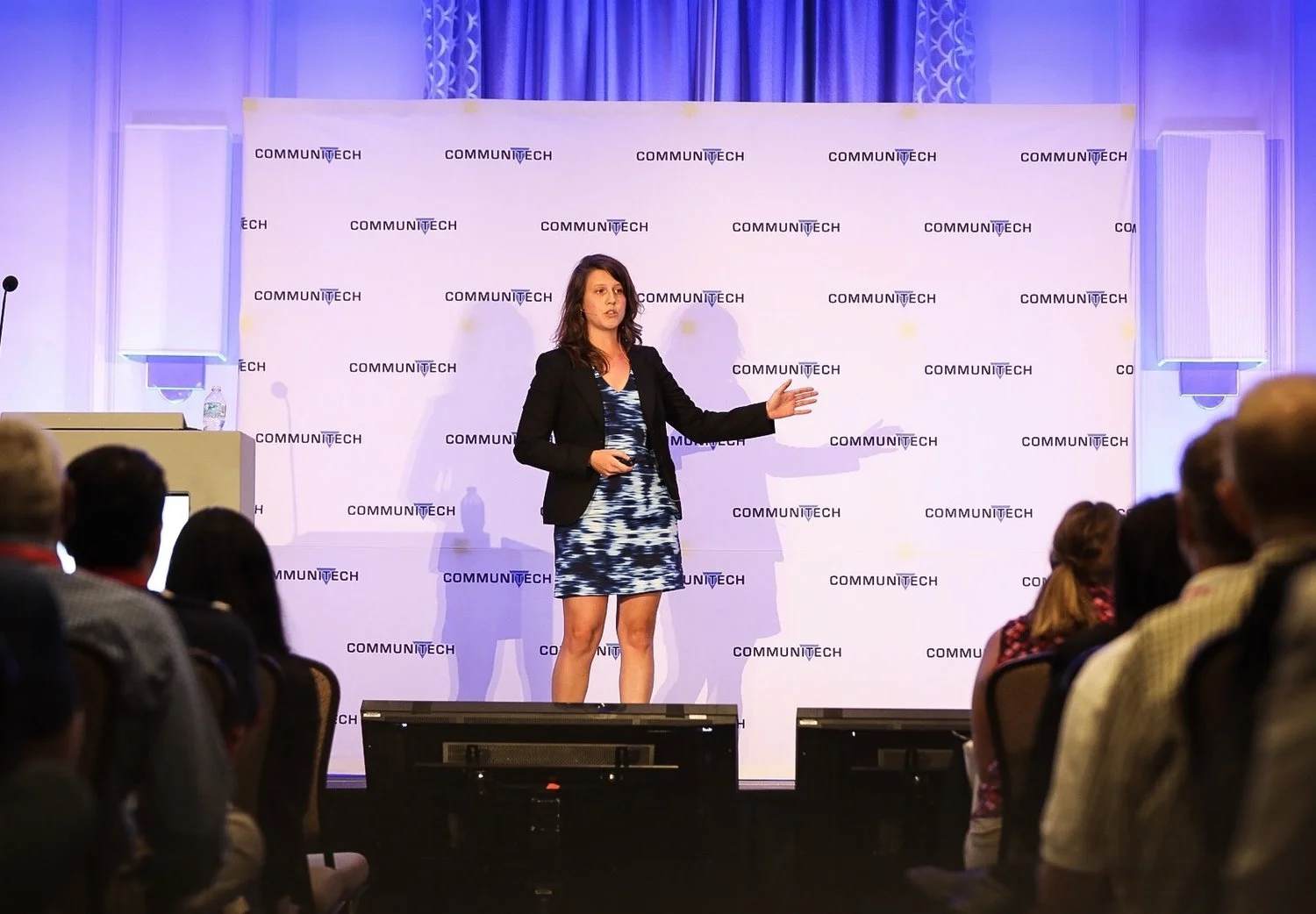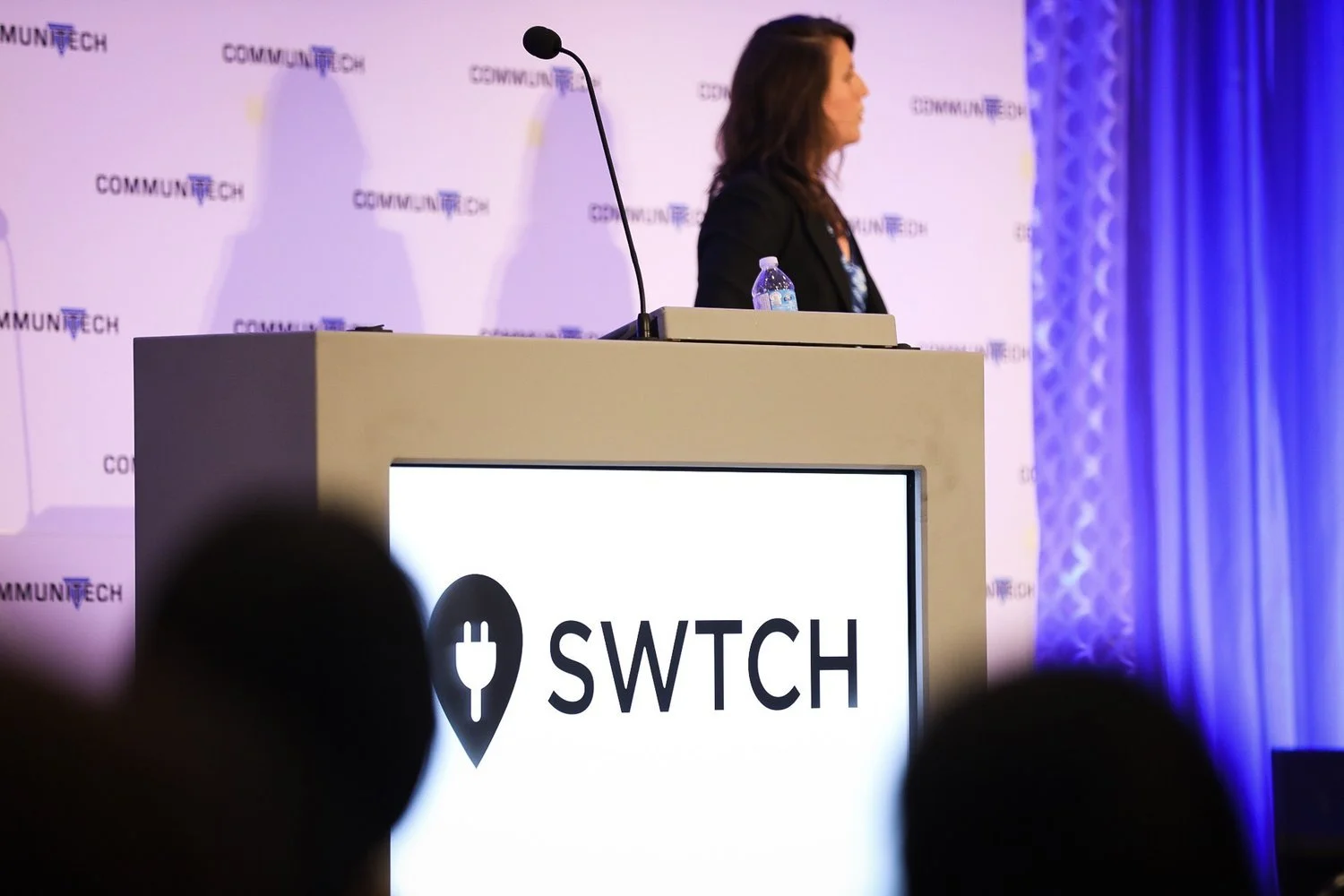Women in Business: Laura Bryson – Taking the lead in Sustainable Transportation
I sat down with Laura Bryson, COO, and co-founder of SWTCH. SWTCH is a young company providing electric vehicle charging solutions.
Please note that I am not paid by SWTCH to write this article. SWTCH was recommended to me when I started the process to request a charger in my condo building. SWTCH is not sponsoring the charger in my building nor did they ask me to promote their services in any way. I decided myself that if EVs are going to be the preferred vehicle of choice moving forward, then we should understand how they work. But also, just as important, we need to understand how the companies that cater to this new demographic function.
Also, as a woman leader in tech, I wanted to hear how Laura's experience compares to other industries.
So, here we are, on a hot July afternoon enjoying cold caffeinated beverages in an open front coffee shop on Bloor Street West in Toronto.
When did you decide that you wanted to be part of the cleantech industry?
LB: I did my undergrad at McGill University and I was always very focused on sustainability and climate solutions. After graduation, I worked for four years with a Toronto-based company called Solar Ship that builds solar electric aircraft. My time at Solar Ship made me even more interested in sustainable transportation.
How did you guys come up with SWTCH?
LB: My co-founder Carter and I originally started with the idea of a marketplace for sharing home electric vehicle chargers. But once we started talking with members of Ontario’s various EV Associations and getting other perspectives on the business, we realized that it would take a long time to build the supply-side of a marketplace which would be useful for drivers. We also noticed that there was a mis-match in that people who use chargers at home tend to live in the suburbs and the people who really need the chargers are in the urban areas. So, we decided that rather than focusing on a Business to Customer (B2C) model, we should focus on a Business to Business (B2B) model and target condominiums, apartment buildings, and parking authorities. That's when we made a “SWTCH”.
And you're an EV driver yourself?
LB: Yes, I've been driving a BOLT for a year and a half. I was one of the first to get one in Ontario. I love it. Even though it was challenging at first because my condo denied my request to install a charger, which made me realize how challenging it can be to own an EV in a dense urban environment like Toronto.
Do you have a charger now in your condo?
LB: Yes, I do. I've moved to a small apartment building and got the owner to agree to install a charger. There was a time where I kept an eye on the range but now it's second nature, and by having a charger at home, I know that I'm always going to have that.
How do you think the cancellation of the Ontario EV incentives will affect things?
LB: I'm curious to see how it's going to affect sales. Research shows that when there are incentives, sales increase. Like for example in BC. They took the incentives away and the sales went down, and now they have brought them back. The numbers will speak for themselves.
How will recent policy changes/cancellation of the incentives affect businesses like yours?
LB: Research shows that because of improved battery technology and prices dropping, EVs are going to be at the same price as regular ICE vehicles by as early as 2020 and that will have its own momentum. I think EVs are here to stay. There are regional and national policies that will affect how fast it grows but at the end of the day, it's just going to keep growing. I'm optimistic. But I guess I have to be. (She says as we both LOL together)
I hope you're just as optimistic about my condo approving my charger request.
LB: Yes, I am actually. I think the decision is whether they install one versus two because of the cost difference. - Let's hope you're right Laura! *fingers crossed
Can the regulation on condo building chargers change like the incentive?
LB: It works a little differently because once Cap and Trade is cancelled any of the funding that flows from that is automatically cancelled. The condo regulations are different built-in policies, so if there were going to be changes, it would take much longer. (After our interview, Laura sent me further comments on this: I looked into it, and there is no indication that the new government will affect the recent condo regulation changes. As I mentioned, the government is incentivized to cut spending, which they've accomplished by doing away with the cap and trade program(and related EV purchase incentives). However, there is no incentive for the government to change the regulations.)
Where are you noticing the most interest to install chargers?
LB: From my perspective, the most growth that we're going to see is in those private, multi-tenant residential and workplace settings because that's where people want to charge.
What about fast chargers?
LB: The networker of fast chargers is different because that's targeting people that are traveling a long distance, and that's only 5% of the time that people are going long distance and need a fast charger. While there is a business model for fast chargers, most charging takes place using a level 2 charger at home or work where vehicles spend most of their time.
How is SWTCH offering a service that's different from the other companies?
LB: There are two types of services provided right now; 1. Proprietary charging infrastructure with proprietary software that provides the full vertical. For example, if you install your ChargePoint charger in your condo, you work with the ChargePoint software, and that's that. 2. More recently there's a push towards what they call OCPP; Open charge point protocol, which is a fancy way of saying that your charger can communicate with different service providers. Much like buying your cell phone from Apple vs. Rogers or Bell. If you buy from Apple, it's unlocked, and you can put in any sim card that works with another service provider. But if you buy from Bell, then you're locked into their plan.
What SWTCH is doing is working with non-proprietary hardware so that users have more choice in the hardware. The reason that's so great right now is that not only does it give the customer more flexibility it's also a lower price point. The companies that sell the whole package will charge so much more for the hardware, but these level 2 chargers all pretty much do the same thing. They charge your vehicle at the same speed, and they all have different functionality with just software components. For example, if you can turn it on or off with an app or an access card or whether its collecting data on energy usage or even doing fancy things like splitting the voltage between multiple chargers. - that's our focus.
What is a typical rate at a charger right now?
LB: It's typically $1.50 -$ 2.50/hr. That's primarily to ensure that the property manager covers the cost of electricity. Some choose to make revenue on top of that.
So it's whatever the management of the property decides to charge?
LB: Yes, it's usually on an hourly basis rather than on a kilowatt-hour basis. Because technically you can't charge for electricity, but you can charge for time. Condos are not a re-distributor of electricity. Similar to paying for parking. Smart chargers all have an internal meter that is measuring the flow of electricity, but since we know that all level 2 chargers are charging at the same rate, it's easy to create an algorithm that covers that cost. It's not limited by the charger but rather by the car. Condos can provide level 1 chargers, but that does take a lot longer to charge. Level 2 is the recommended and level 3 is faster but more expensive because it needs expensive electrical infrastructure upgrades.
How do you see SWTCH growing as a company?
LB: Right now, we see EV charging as our entry into the market, but over the long term we're going to focus on energy management in addition to EV charging. With more EVs and greater electricity usage from these EVs, there is a lot of data that we can provide to energy management and utility companies to help them manage their services and the demand on the power grid more efficiently.
How do you see solar panels fitting in all this?
LB: I think of it as a clean energy ecosystem, where solar panels generate electricity during the daytime, sending energy to the grid or storage systems for later use. It all fits into this symbiotic system.
Do you think that with more EVs on the road and more charging solutions, the price of EVs will change soon?
LB: The biggest cost of an EV right now is the battery, which is primarily lithium ion. From what I understand, they are great for mobile, like your cell phone and car. For battery storage, they are looking into other chemistries that are based on nickel. I was just reading about a company in Kitchener, Ontario that's doing zinc battery storage. So as the cost of battery goes down, the cost of Evs will go down. And even if there are concerns about lithium-ion shortage, or the origin of the lithium, for example from Congo, and concerns around the way that its mined, we can shift to other chemistries to replace those. There is no reason that we need to be completely reliant on one source. Which is why it's so cool that there are companies right in our backyard that are looking at zinc as a replacement. Apparently its a lot more abundant and it doesn't have any flammability concerns at all. (FASCINATING - My mouth is open the entire time she's talking and I'm trying to look professional but really I just said WOW out loud three times.)
Women in cleantech - how do you feel in this male-dominated industry?
LB: The previous company I was working for was very male-dominated. It was very high-tech, and disproportionally, there were more male engineers than female engineers. The work environment was sometimes intense with a lot of competing opinions and priorities, which was stressful to navigate as one of the few women on the team. Having worked in cleantech for many years, I'm used to working with a lot of men. My experience may be little different than other female leaders because we've been actively seeking out opportunities to engage with women in tech and female founders’ groups.
And how are you seeking out these connections?
LB: Last August I participated in Fierce Founders which is a boot camp for women-led businesses. Twenty-two women participated in a two-week intensive boot camp where you attend different workshops and refine your pitch. You have to compete with all these women and you're being graded the whole time. They narrowed it down to 8 that get to pitch on the final day in front of 200 people. We were in the finalist and from that we got into a six-month accelerator program associated with the same group - Communitech in Kitchener. (incubator for startups). After the six months, they set you with a business advisor who helps you. You meet on a monthly basis and it's like an accountability meeting. I connected really well with one of the business advisors there, her name is Karen. She now knows SWTCH better than anyone. She is the one that I can always go back to. Even if something has gone wrong and I need her support or help. It's been very refreshing being part of these women in tech programs.
I think that women have a very different approach to business and it can be stressful when you have a lot of male opinions around you. Sometimes, you think that you're doing something wrong because you're just doing it differently. For example, I was just at the Y Combinator Female Founders conference, and the panelists shared the same concerns and issues and perspectives that I'm constantly dealing with and I thought to myself - ok it's not just me. And it's been very refreshing having that.
Do you feel that we are going through a change as women in leadership roles?
LB: I feel very lucky to be here in this moment in time when all this positive stuff is happening. Forget what’s happening provincially, but federally there is funding that is going towards helping women in founder or management positions. (Laura is glowing and smiling ear to ear, and I want to reach over the table and give her a big hug. I'm so impressed with this woman. She makes me want to start my own business.)
Finally, Laura, do you have any final words for the future of EVs?
LB: There is still a lot of education that needs to be done to get people to understand the benefits of EVs and how it all works. I'm looking forward to that piece being more mainstream. I do think that at some point we are going to hit a tipping point and it's going to make more sense to have an EV over any other kind of vehicle. (Here Here sister!)
To learn more about SWTCH check out their site
To learn more about Laura check out her LinkedIn page here
This blog post was written by Aniseh Sharifi who has been an EV owner since 2018. She’s an active electric vehicle advocate, volunteering with the Tesla Owners Club of Ontario and EV Society. She’s the Co-Founder of Fierce Media, a boutique communications agency specializing in e-mobility and the transition to renewable energies.
Are you looking for new and creative ways to share your story online and increase brand awareness? Check out Fiercemedia.ca, and let’s connect!



